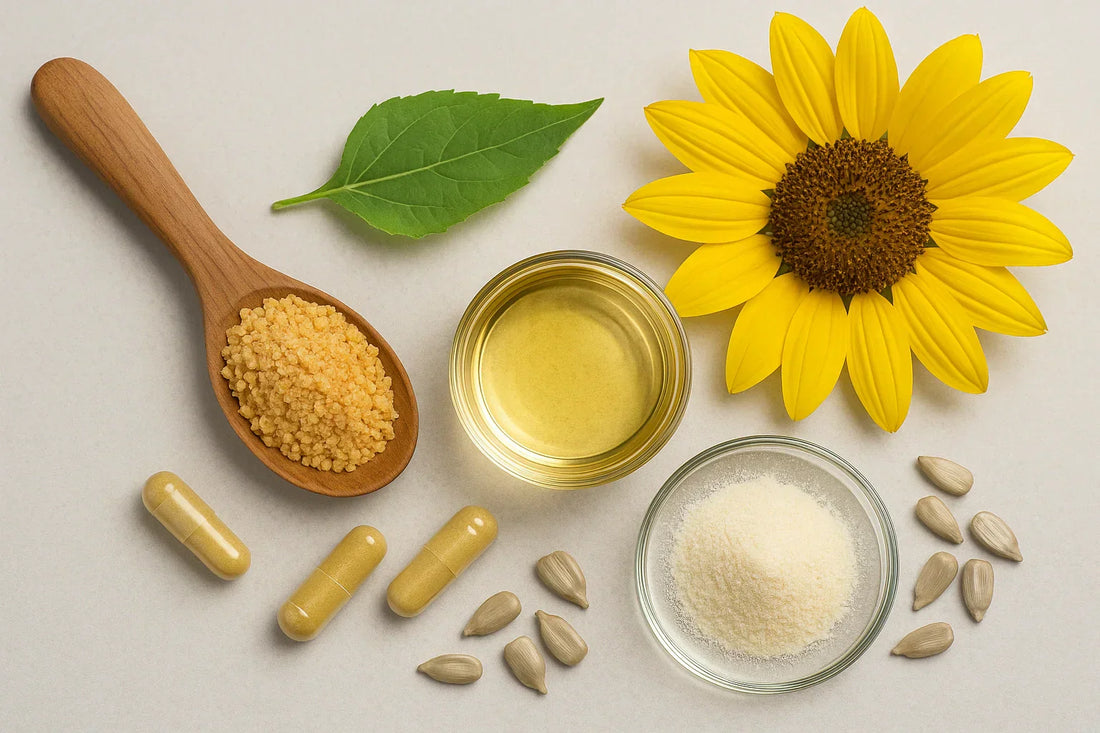
Sunflower Lecithin: Smoother Mixes for Protein & Where We Use It
1) What is Sunflower Lecithin?
Sunflower lecithin is a blend of phospholipids obtained from sunflower oil processing. In foods it works as an emulsifier, helping water and fat phases combine so powders disperse smoothly and coatings stay even. It’s authorised in the EU as lecithins.
2) Benefits of Sunflower Lecithin
2.1 Better mixability
Sunflower Lecithin helps protein powders wet and disperse quickly for a smooth shake with fewer clumps (that’s the core emulsifier function).
2.2 Consistent texture & flavour
Sunflower Lecithin stabilises the mix so each serve tastes and feels the same from tub to tub.
2.3 Easier, cleaner prep
Sunflower lecithin instantises the powder so it wets in cold water, disperses quickly, and leaves fewer clumps or residues in the shaker.
3) Dosage & Timing
There’s no consumer timing—lecithin is built into the recipe. EFSA’s re-evaluation of lecithins found no need for a numerical ADI under authorised uses (i.e., acceptable at typical food levels). Always follow the on-pack serving.
4) Safety & Side Effects
No safety concern reported for lecithins used as a food additive at reported use levels. If you have soy allergies, note that our powders use sunflower lecithin, while bars list soy lecithin—always check the ingredient deck for your flavour.
5) Which Maxine’s Burn products contain Sunflower Lecithin?
-
Burn Protein: Everyday whey shake for lean recovery; smooth-mixing flavours.
-
Whey and Collagen Protein: 5-in-1 whey + collagen blend for muscle, joints, skin & hair.
- Burn Sleep Protein: Night-time protein for a creamy pre-bed shake.
- Burn Dessert Mousse: Casein-rich dessert you whisk into a guilt-free mousse.
6) Related ingredients
- Soy Lecithin: Emulsifier for silky chocolate coatings.
- Cocoa Powder: Partners in chocolate flavour systems.
- Glycerine, Polydextrose, Inulin: Texture/moisture support often paired with emulsifiers.
